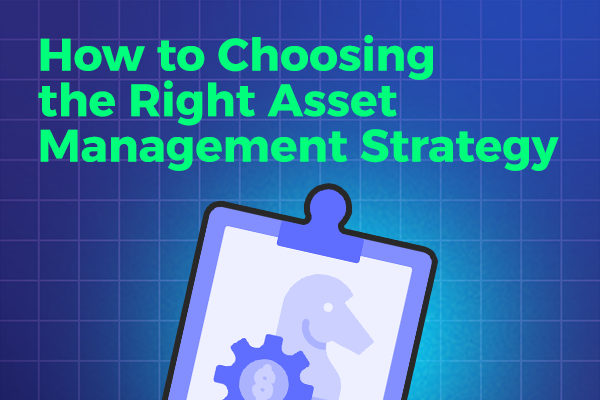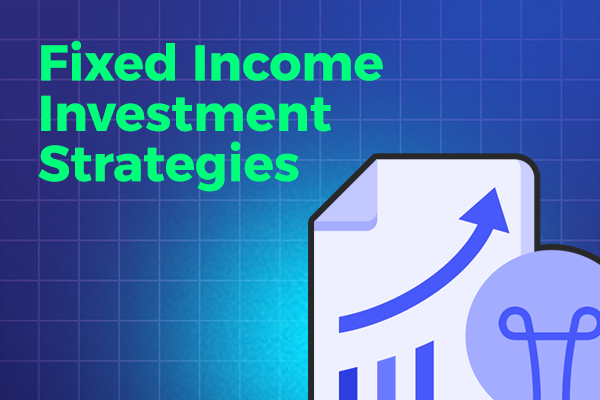Welcome to our comprehensive guide on corporate bonds – a popular investment option for individuals and businesses alike. If you’re looking for a new way to diversify your portfolio, corporate bonds are an attractive choice due to their steady income and low-risk nature. In this guide, we’ll explore what corporate bonds are, the benefits and risks associated with investing in them, and provide tips and strategies for successful investing.
Key Takeaways:
- Corporate bonds can be a valuable addition to any investment portfolio.
- Investing in corporate bonds can provide steady income and low-risk returns.
- It’s important to consider factors such as credit ratings and bond maturity when investing in corporate bonds.
- Trends in the corporate bond market and current events can affect bond prices and market liquidity.
- Investors should consider diversification and bond laddering strategies when investing in corporate bonds.
Understanding Corporate Bonds
Corporate bonds are debt securities issued by corporations looking to raise capital to finance projects or expand their operations. They are one of the most popular investment options in the corporate bond market, particularly for investors seeking fixed income investments.
There are two main types of corporate bonds: investment-grade corporate bonds and high-yield corporate bonds. Investment-grade bonds are issued by corporations with a strong credit rating, indicating a lower risk of default. High-yield bonds, on the other hand, are issued by corporations with a lower credit rating and are considered more risky, but offer higher yields to compensate for that risk.
Investment-Grade Corporate Bonds
Investment-grade corporate bonds are issued by corporations with a credit rating of BBB- or higher. These bonds typically offer lower yields than high-yield bonds, but they are considered less risky since the corporations issuing them have a strong credit rating and a lower risk of default. Investing in investment-grade corporate bonds can provide stability to an investment portfolio, particularly for more risk-averse investors.
High-Yield Corporate Bonds
High-yield corporate bonds are issued by corporations with a lower credit rating, typically BB+ or lower. These bonds offer higher yields to compensate for their higher risk, making them an attractive option for investors seeking higher returns. However, investing in high-yield bonds comes with a higher risk of default and can be more volatile than investment-grade corporate bonds.
Investors should carefully consider their risk tolerance and investment objectives before deciding between investment-grade and high-yield corporate bonds.
Benefits of Investing in Corporate Bonds
Corporate bonds can offer several advantages to investors, including potentially higher yields than government-issued bonds. The corporate bond market also provides opportunities to diversify your investment portfolio and potentially earn more income. There are various reasons why you should consider investing in corporate bonds, including:
- Potentially Higher Yields: In general, corporate bonds offer higher yields than government-issued bonds. This is because corporate bonds have a higher risk of default compared to government bonds. Higher yields can be attractive to investors looking for regular income, such as retirees.
- Diversification through ETFs: Investing in an exchange-traded fund (ETF) that tracks a diversified portfolio of corporate bonds can provide exposure to a broad range of bonds. Diversification can help reduce risk by spreading your investment among multiple bonds.
- Relationship Between Bond Rates and Yields: Understanding the relationship between bond rates and yields can be beneficial to investors. Bond prices and interest rates have an inverse relationship – when interest rates rise, bond prices usually fall. This can result in a decline in the value of your portfolio. By monitoring interest rate movements and the yield on your bonds, you can make informed decisions about when to buy and sell.
In summary, corporate bonds can offer attractive yields and diversification potential, but as with any investment, there are risks to consider. It’s important to conduct thorough research and understand the factors that can affect the performance of your investments.
Risks Associated with Corporate Bonds
Investing in corporate bonds can provide attractive returns, but it’s important to be aware of the risks involved.
Default Risk
One of the primary risks associated with corporate bonds is default risk, which is the risk that the issuer will not be able to make interest payments or repay the principal on time. This risk is higher for high-yield bonds than for investment-grade bonds, as high-yield bonds are issued by companies with lower credit ratings and are considered more risky.
Interest Rate Risk
Interest rate risk is another important consideration when investing in corporate bonds. This risk arises from the fact that bond prices and interest rates have an inverse relationship, meaning that as interest rates rise, bond prices fall, and vice versa. Therefore, if interest rates increase after an investor has bought a bond, the value of the bond will decrease, which could result in a loss if the investor sells the bond before it reaches maturity.
Credit Risk
Credit risk is the risk that the issuer of a bond will default, and is closely tied to the issuer’s creditworthiness. The creditworthiness of a company can be assessed by looking at its credit rating, which is assigned by credit rating agencies such as Moody’s and Standard & Poor’s. Investors in corporate bonds should be aware of the credit ratings of the companies issuing the bonds, as those with lower ratings are generally considered higher risk.
Factors to Consider in Corporate Bond Investing
Before investing in corporate bonds, there are several important factors to consider to make informed decisions. These can include:
- Credit ratings: The credit rating of a company can indicate the likelihood of default. Investment-grade corporate bonds typically have higher credit ratings, while high-yield bonds have lower ratings and therefore carry more risk.
- Bond maturity: Consider the length of time until the bond matures and the corresponding yield rate. Longer-term bonds generally offer higher yields, but they may also be subject to more risk and volatility.
- Yield-to-maturity calculations: This calculation helps determine the total return on investment for a bond, factoring in the bond’s purchase price, interest rate, and maturity. Understanding yield-to-maturity is critical in assessing the profitability of a bond.
- Interest rate environment: Changes in interest rates can affect bond prices. It is essential to consider current interest rates and economic forecasts when investing in corporate bonds.
- Diversification: It’s important to diversify a bond portfolio by investing in different industries, credit ratings, and maturities. This can help reduce risk and increase returns over time.
By considering these factors carefully, investors can make more informed decisions and build a well-rounded corporate bond portfolio.
Unlock Wealth: Sign Up Now for Smart Investing Success
Strategies for Investing in Corporate Bonds
Investing in corporate bonds can be a complex process that requires careful consideration and planning. Here are some strategies that can help investors maximize their returns and minimize the risks associated with corporate bond investing:
Bond Laddering
Bond laddering involves buying several bonds with different maturity dates, creating a “ladder” of bonds that mature at different times. This can help investors to minimize interest rate risk by ensuring that they have a steady stream of income from their bonds, regardless of changes in interest rates.
Diversification
Diversification is a key strategy for reducing risk in any investment portfolio. By investing in bonds from different industries and companies, investors can spread their risk and minimize the impact of any one company’s financial performance on their overall returns.
Bond Fund Investing
Bond funds are mutual funds that invest in a portfolio of bonds. This can be a convenient way for investors to gain exposure to a diversified range of bonds with varying maturities and credit ratings. However, investors should be aware that bond funds carry their own risks, such as management fees and the potential for the underlying bonds to default.
By considering these strategies, investors can make informed decisions about investing in corporate bonds, and maximize their potential returns while minimizing their risks.
Current Trends in the Corporate Bond Market
The corporate bond market is subject to various trends, influenced by different factors. Here are some of the current trends:
1- Increased issuance of investment-grade corporate bonds: Investment-grade corporate bonds are currently in high demand, with many companies taking advantage of low-interest rates to issue bonds.
2- High-yield corporate bonds have proven popular: Despite their higher risk, high-yield corporate bonds have experienced increased popularity due to their higher potential yields compared to investment-grade corporate bonds.
3-Corporate bond ETFs gaining popularity: Exchange-traded funds (ETFs) that invest in corporate bonds have gained in popularity, providing investors with a convenient way to get exposure to the corporate bond market and diversify their portfolio.
4- Volatility due to economic and political events: The corporate bond market can be influenced by economic and political uncertainty, affecting bond prices and market liquidity. This market volatility can lead to significant losses for investors who are not cautious when investing in corporate bonds.
It’s important to stay up-to-date on current trends in the corporate bond market in order to make informed investment decisions.
Top Tips for Corporate Bond Investors
Investing in corporate bonds can be a smart way to diversify your portfolio and potentially earn higher yields than other investment options. However, it’s important to approach corporate bond investing with a clear strategy and careful research. Here are some tips to help you get started:
1- Conduct thorough research: Before investing in any corporate bond, it’s important to research the company and assess its creditworthiness. Look at the company’s financial statements, credit ratings, and any news or events that could affect its ability to make payments on the bond.
2- Stay updated on market news: Keep a close eye on market news and trends that could affect the corporate bond market, such as changes in interest rates or economic indicators. This can help you make informed decisions about when to buy or sell bonds.
3- Diversify your portfolio: To reduce risk, consider investing in a variety of different corporate bonds from different companies and industries. This can help protect your portfolio if one bond or sector experiences a downturn.
4- Consider bond laddering: Bond laddering involves investing in bonds with different maturities, which can help balance yield and risk. By spreading out your investments over different maturities, you can potentially earn higher yields without taking on too much risk.
5-Look into bond funds: Bond funds can be an efficient way to invest in a diversified portfolio of corporate bonds. These funds are managed by professionals who choose a mix of bonds based on risk and return, making it easy for individual investors to access the corporate bond market.
By following these tips and staying informed about market trends, you can make smart decisions when it comes to investing in corporate bonds. As with any investment, it’s important to carefully consider the risks and benefits before making a decision.
Corporate Bonds vs. Other Investment Options
When it comes to investing, there are various options available, including stocks, government bonds, and corporate bonds. Each investment option has its unique advantages and considerations, making it vital to understand the differences before deciding where to invest your money.
One significant difference between corporate bonds and stocks is that stocks represent ownership in a company, while bonds are debt securities. With stocks, investors share in the company’s profits, while with bonds, investors receive fixed interest payments and the return of their principal investment upon maturity. While stocks may offer higher returns over the long term, corporate bonds can provide investors with relatively stable income without the same level of volatility.
Compared to government bonds, corporate bonds typically offer higher yields, making them more attractive to investors seeking income. However, corporate bonds also have higher risk due to the potential for default or credit risk. Government bonds, on the other hand, are backed by the government, making them less risky but offering lower yields.
Investment-grade corporate bonds, typically issued by established companies with a strong credit rating, offer lower yields than high-yield corporate bonds, which are issued by companies considered more likely to default. While high-yield corporate bonds may offer higher returns, they come with a higher risk of default, making them a riskier investment option.
In conclusion, while corporate bonds may not offer the same high returns as stocks, they can provide investors with a relatively stable source of income and a diversification option for their portfolio. It’s essential to consider your risk tolerance, investment goals, and other factors before deciding where to invest your money.
Conclusion
Corporate bonds can be an excellent addition to any investment portfolio. Through understanding the different types of corporate bonds available, investors can identify which bonds align with their investment goals and risk tolerance levels.
Investors should consider the benefits and risks associated with investing in corporate bonds, such as potentially higher yields and default risk. They should also evaluate important factors such as credit ratings, bond maturity, and yield-to-maturity calculations before investing.
To maximize returns and minimize risk, investors may want to adopt various strategies such as bond laddering, diversification, and bond fund investing. Staying updated on current trends in the corporate bond market is also crucial for making informed investment decisions.
Final Thoughts
Incorporating corporate bonds into an investment portfolio can help diversify risk and potentially provide steady income streams. However, investors should conduct thorough research, stay up-to-date on market news, and consider working with a financial advisor before investing in corporate bonds.
By being aware of the benefits, risks, and key considerations associated with investing in corporate bonds, investors can make informed investment decisions and improve their overall investment performance.
FAQ
Q: What are corporate bonds?
A: Corporate bonds are debt securities issued by corporations to raise capital. When investors buy corporate bonds, they are essentially lending money to the issuing company in exchange for regular interest payments and the return of the principal amount at maturity.
Q: What are the different types of corporate bonds?
A: There are two main types of corporate bonds: investment-grade bonds and high-yield bonds. Investment-grade bonds have higher credit ratings and lower yields, while high-yield bonds have lower credit ratings and higher yields.
Q: What are the benefits of investing in corporate bonds?
A: Investing in corporate bonds can offer potentially higher yields compared to other fixed-income investments. Additionally, corporate bonds provide diversification opportunities through corporate bond ETFs and can be linked to factors such as corporate bond rates and yields.
Q: What are the risks associated with corporate bonds?
A: Investors should be aware of risks such as default risk, which refers to the possibility of the issuing company being unable to make interest or principal payments, as well as interest rate risk and credit risk.
Q: What factors should I consider when investing in corporate bonds?
A: Important factors to consider include the credit ratings of the bonds, the maturity dates, and calculations such as yield-to-maturity, which can help determine the potential return on investment.
Q: What are some strategies for investing in corporate bonds?
A: Strategies for investing in corporate bonds include bond laddering, which involves purchasing bonds with staggered maturity dates, diversification through owning bonds from different sectors or industries, and investing in bond funds.
Q: What are the current trends in the corporate bond market?
A: Current trends in the corporate bond market include factors that impact bond prices and market liquidity, such as changes in interest rates, economic conditions, and investor demand.
Q: What are some top tips for corporate bond investors?
A: Top tips for corporate bond investors include conducting thorough research on bond issuers, staying updated on market news and economic indicators that can affect bond prices, and diversifying investments across different types of corporate bonds.
Q: How do corporate bonds compare to other investment options?
A: Corporate bonds can be compared to other investment options such as stocks and government bonds. Each option has its advantages and considerations, with corporate bonds offering potential fixed-income returns, while stocks carry more market volatility and government bonds provide lower-risk options.



